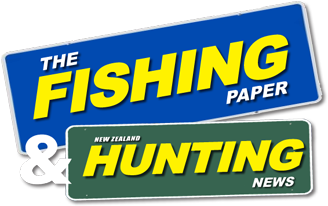Book Reviews
More Than the Odd Round Mate
By Chris Phillips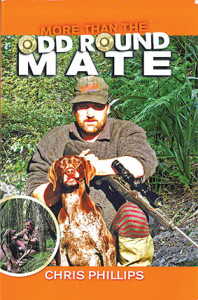
Published By The Halcyon Press
RRP $35
Reviewed By Daryl Crimp
As the title doubly suggests, Chris Phillips has accumulated plenty of experience behind the rifle and what you are about to read is written in a ‘blokesy’ down-to-earth fashion. In the introduction, he makes a lot of his poor education and incompatibility with institutionalised education but, as the book unfolds, it becomes apparent that he’s no slug, and certainly very bush savvy. While he claims to be a shooter ahead of a hunter, More Than The Odd Round Mate is a salt and pepper assortment of hunts and incidents spanning a decades long love affair with the back country, with enough variety to keep the pages turing at a good clip.
Chris is a good storyteller, starting each chapter with a catchy ‘hook’ that quickly immerses you in the story. The underlying theme of the book depicts the archetypal upbringing of the rural Kiwi lad, when opportunities existed to get into the wilderness and be shaped, honed and guided by nature to become self-respecting, resilient, adventurous and resourceful – plus put a few bucks in the back pocket along the way.
While written from the perspective of a commercial meat shooter, the veil is thin and there is much the recreational hunter can relate to: hard days hunting, all night missions, duffed opportunities, the need to improvise and enough ‘cordite’ to overwhelm the smell of printer’s ink. While purist hunters may struggle with the commercial aspect of the shooter hunter, it is interesting to note that path Chris took still allowed him to evolve with strong hunting ethics and a deep love and respect for the wilderness.
Chris uses humour, metaphor and hyperbole to good effect to keep the stories entertaining, although overuse of slang and colloquial idioms do get tiring in the reading situation. There are ample colour photos to support the yarns and while many are from the instamatic film era and of limited quality, the overall layout of the pictures isn’t strong.
What does shine through is Chris’s observation of the bigger picture and his ability to draw pleasure from all components of the greater outdoor experience: grunge-caked smelly sleeping bags, interludes with feral cats, pet mice, freezing snow, purple toadstools and maggot-infested meat is a much a part of the beauty of the wilderness as is the golden sunrise.
More Than The Odd Round Mate is an enjoyable and entertaining read – with the odd glimpse of brilliant writing thrown in.
Hunters and the Hunted
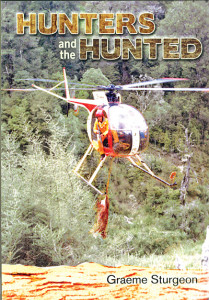
Hunter
By Graeme Sturgeon
Published by Halcyon Press
Reviewed by Daryl Crimp
RRP $39.99
Many books have been written around New Zealand’s culling days and the helicopter era, and one could question whether there is anything to be gained by adding another volume of recollections to the mix. On the face of it, Graeme Sturgeon presents another linear tale of an adventurous life culling, hunting for meat, possuming, aerial shooting and ultimately graduating to the role of pilot. Sturgeon kicks off by describing how he stumbled into ‘the best bloody job’ he ever had and the story adopts the pace of a culler settling into the routine of weeks of footslog. However, as you become absorbed with the read, you get a sense of the many nuances that make up what is ostensibly a rugged and brutal business.
Graeme’s style is prosaic but crisp and clean, and he takes to recounting events methodically, and without the need for exaggeration or hyperbole – in keeping with hunters of that era. As the pages turn, the book develops its own rhythm and there are little gems dotted throughout: the insightful piece on the loneliness of the job, the poignant reflection on the moment he decided to spare the lives of a pair of hinds and fawns, and his observations of how city light was harsh on the culler’s eye, are fine examples of how he lifts the book above the pedestrian.
The book does bring a new perspective to the aerial hunting story and that is, as told through the eyes of the shooter. That he shot with the legendary Joe Keeley makes it more enticing, and it is fascinating reading but, comprising a third of the book, you are left wanting more. None-the-less, it helps round out the story and provide a fresh spin on a well-travelled topic.
50 Years of Trophy Hunting
50 Years of Trophy Hunting
By Gary Joll
Published by Halcyon Press
Reviewed by Tony Entwistle
RRP $50
Few modern New Zealand hunters have, or ever will have, Gary Joll’s credentials. Gary’s first trophy was taken in 1959 … a Bull Tahr from the Godley Valley at the head of Lake Tekapo. Although Gary couldn’t know it then, this was a species and an area that ultimately in many respects defined his career and his reputation.
As a keen recreational hunter and young school teacher, his life changed significantly in 1963 following several months in an Alaskan hunting camp. On his return to New Zealand, Gary set about establishing his own career as a successful professional hunting guide. In 1970 he settled permanently in the Godley Valley for 22 years, helping to establish Lilybank Lodge, which quickly gained an international reputation as New Zealand’s pre-eminent hunting operation. I was privileged as a university student in the 1970s to work many of my vacations on Lilybank Station. Evenings were often spent at the Lodge with photos and cartridge collections spread out on the floor and Gary regaling us with stories of memorable hunts, trophies and the fantastic people he had hunted with. Little wonder I guess that I was inspired to also eventually become a professional guide. Gary was the recipient of the prestigious Safari Club International, Outstanding International Professional Guide of the Year award in 1992.
50 Years of Trophy Hunting is Gary Joll’s fourth hunting book, following Big Game Hunting in New Zealand (1968), To Alaska To Hunt (1978) and Bulls, Bucks and Bureaucrats (2010). In this latest book Gary sets about documenting his extended journey as a trophy hunter in an easy, unpretentious style. The book is not a chronological sequence but rather details his hunting experiences country by country, from New Zealand and the South Pacific to the United States and Africa, re-telling an enviable series of adventures, successes and inevitable disappointments. Gary Joll is a natural born storyteller with a flair for observation. His descriptions of the hunting terrain, the animals, their habits and the unfolding stalks both good and bad, are compelling.
Gary’s forte as a hunter is undoubtedly trophy bull tahr and there is probably no-one who is better able to provide better insights into successfully hunting them and assessing their trophy potential. In 50 Years of Trophy Hunting Gary also provides plenty of sage advice for aspiring trophy hunters on a wide range of species, based not only on his successes but also from several less than satisfactory outcomes he experienced. His narrative of the various hunts, interspersed with insightful observations into the individual nuances of each animal and balanced with a series of excellent photographs, should maintain the interest of any true-blue hunter whose soul is stirred by the scent of the chase.
Trophy hunting can be a controversial sport… even amongst hunters themselves. Some see it only as the collecting of heads which couldn’t be further from the truth. Trophy hunters like Gary Joll have a genuine reverence for their quarry, valuing their one-on-one experiences long after the fleeting moment of the kill. The ethics of ‘trophy hunting’ cannot be prescribed and are not simply about securing the ‘biggest heads’. Ultimately they are something an individual must subscribe to for themselves. Joll is a true professional who sets high standards not only for himself but for others he hunts with… including the many guides he used to help him in his trophy quest. “It is a self-evident absolute that there are no degrees of Professionalism … Professionalism is a complete way of life, a mind-set and attitude”. Not all guides got Gary’s tick of approval.
I may be biased off course, but I can sincerely commend this book to all hunters: those who aspire to hunt trophies wherever they can find them and those who more regularly hunt for the pot. For whatever reason you hunt, it is about gathering a lifetime of experiences. How you go about it ultimately defines who you become and Gary Joll has certainly done that.
Two moments in the book, based on conflicting emotions and revolving around trophies that had long eluded Joll, eloquently summarise for me what it takes to be a dedicated trophy hunter: Gary’s successful New Zealand Sambar hunt in the rain and his final unsuccessful Whitetail hunt in the USA. Gary can be tough on himself and tough on those who don’t measure up. The final photo in the book speaks volumes in this regard.
Footnote: Somewhat ironically, not long after 50 Years of Trophy Hunting went to print, Gary finally ticked off the missing Whitetail trophy on his bucket list, recently scoring his buck not far from the area he saw his first trophy Whitetail almost 50 years before.
The New Zealand Wilderness Hunter
The New Zealand Wilderness Hunter
By James Passmore
Published by Halcyon Press
Rrp $40
Reviewed by Daryl Crimp
From a great title and strong cover to a cracking opener about assigning personal names to landmarks and thereby taking ownership of New Zealand’s wilderness, this book promises a point of difference in a crowded genre. At the outset James gives a taste of his superb narrative style in setting the scene on what it means to be a wilderness hunter and leaves the reader anticipating some serious ‘off-the-map’ adventure.
He then breaks into a more philosophical bent as he attempts to explain what constitutes a wilderness hunter and here the story briefly becomes convoluted and loses momentum. Similarly, in The Trophy Hunter and Death and the Hunter he attempts to cover complex ideology and debates some interesting points, but gets a bit bogged down at times.
However, his true talent surfaces when you put a rifle in his hand and set him on the muddy trail, because he really hits his straps when describing the hunt or passing on information, such as in Twelve Pointer on the West Coast, Rattling for Fallow Bucks and Pyke River Stag. His writing is crisp, pacey and descriptive, and gives the reader a sense of being there. This is Passmore at his best. Hunting the Hollyford provides an insight into the hard grind and rigors of solo hunting, while his description of a first alpine hunt encapsulates the challenge of tahr hunting nicely, as he tells it like it is, duffed shots and all.
In a couple of chapters he slips into writing in the present tense and, while it gives the reader a sense of experiencing the situation with him in real time, it is risky and makes the book feel more like a compilation of previously written material. In Hidden Falls Stag use of the present tense also allows a bit of melodrama to creep in, which he certainly doesn’t need.
But when on track, even the inherent boredom that comes with long spells of hunting in the wilderness is handled deftly and epitomised through wonderful turn of phrase. When describing being hut-bound for a week due to shitty weather, James states, “It was like being in prison, only there were no other convicts to talk to and you couldn’t get any tattoos.”
I like his writing but does the book deliver on its big promise at the beginning?
I’ll let you be the judge of that!
Great Walks of New Zealand Maps
Great Walks of New Zealand Maps
Craig Potton Publishing
Reviewed by Imo McCarthy
$24.99 each
Craig Potton Publishers and Roger Smith of Geografix have produced maps of the nine Great Walks of New Zealand.
These maps give the impression of aerial photographs yet are uncluttered allowing the tracks, significant features and huts to stand out. The maps have two sides, one showing the Great Walk and the other showing a much wider view, often of the National Park surrounding the walk.
The 3D look gives a good feel for the ups and downs you will experience on the tracks and there is also a cross section showing the peaks and saddles and the kilometres travelled. The vertical exaggeration on the cross section for the Abel Tasman Track could make some people think they are striding over mountains!
I looked very carefully at the Abel Tasman Track map, as this is the area I am most familiar with. I was pleased to find that the times given were moderate and attainable and the low tide crossings and bridges were clearly marked. Private land and the Perrine Moncrieff Scenic Reserve are identified. The map gives essential information about campsites as well as huts and gives reference to the DOC contacts for booking and updates.
On this side of the map you can also see other tracks in Abel Tasman National Park. There is no detail about times or hut size for this area, but this information can be accessed from the internet.
The other side of the map shows a much larger area and includes much of Kahurangi National Park. Huts and tracks are clearly marked. Only half of the Wangapeka track is shown – enough to raise your interest perhaps but then this is a Great Walks map. The map on this side extends from Farewell Spit in the north down to the St Arnaud Range in the South.
I also examined the Tongariro Circuit map. This map shows the circuit in the top half of the map and the round the mountain track in the bottom half. I think it could possibly have shown more detail of the Circuit and less of the round the mountain track as that is also clearly shown on the Tongariro National Park map on the other side.
The maps are made of a material called Rockstock, a tree free paper substitute. It is made from waste from the building industry. Offcuts, waste, stone rock, marble and tiles are ground to recover Calcium Carbonate, which makes up about 80% of the paper; the rest is a non-toxic resin. It fells like a type of plastic but is more environmentally friendly.
I tested for waterproofness and yes, while wetting the surface the water did not soak in. I tried to tear the edge and it only stretched a bit so they are tough enough. Moths and other insects don’t eat it so I guess if you put it away in a drawer for several years between trips, the silver fish will leave it alone. They say it is photodegradable which means that if you leave it out in the sun for months it will get brittle and break down.
I love maps, they hold my dreams and sometimes my achievements and experiences. These are very appealing. They are attractive to look at, serviceable, giving reliable information and strong enough to be taken in and out of your pack in all weathers. The map’s two sides give many other options. Altogether, a good purchase.
Blimmin’ Heck
Blimmin’ Heck
Tales & Musings of a Kiwi Bloke
By Kerry Butler
Self Published
Available at all good bookstores nationwide – $25
Reviewed by Daryl Crimp
To be frank, I was nervous of this book for the simple reason the colloquial title and reference to a ‘Kiwi Bloke’ had me panicking that it would be be a badly crafted ramble, like some that have crept into the hunting genre over recent years. I should learn to not judge a book by its cover.
While Kerry’s writing style is matter-of-fact, it is distinctive. He writes ‘orally’, which creates a sense of listening to anecdotes and tales while sitting around a campfire; “The next story I’m going to tell you…!”
Much of the enjoyment of the read comes from the eclectic mix of topics covered – observations on human nature and foibles, youthful reminisces, through to various outdoor yarns, and occasionally the warmth from the campfire shines through, especially in the poignant chapter dealing with the loss of a much loved dog and companion. In simple language, Kerry is able to convey sadness, loss, loneliness and hope – emotions that will strike a chord with all.
In essence, Kerry Butler is a ‘Pop-up-toaster’ writer: he uses simple form and function to transform the commonplace into the readable and entertaining. There are stories of chipped teeth, grumpy neighbours, randy women, party antics that border on the ribald, and understated yarns about getting lost in the bush or fog. There is also a heavy sense of nostalgia in his writing, a touch of philosophy, plenty of keen yet whimsical observations and just a hint of cynicism. Nothing is ‘too deep’, which makes the ‘musings’ chapters like “Atmosphere’, ‘Pettiness’, ‘What’s the Meaning of Life’, and ‘Camping’, perfect catalysts for further thought or discussion.
The book is episodic and that is a difficult structure to get right, but Kerry pulls it off, partially because it’s a good pick up and put down read, and also because it is not purely a hunting/fishing book, which will broaden its appeal. However, what I liked most was the sense of insightful irony that pervades his writing: ‘What drives people to work is their dream of retiring, but the reality often leaves them at a loose end and unhappy.’
If you are at a loose end – this is a good book to retire with.
A History of Hunting
A History of Hunting
The Deerstalkers Part 2 1987-2012
Reviewed By Tony Orman
Compiled as a celebration of the last 25 years of the New Zealand Deerstalkers’ Association by NZDA patron, Ian Wright, this book comprises a variety of subjects and stories from the association’s activities. The result is a nice blend of hunting tales, instruction and historical summary.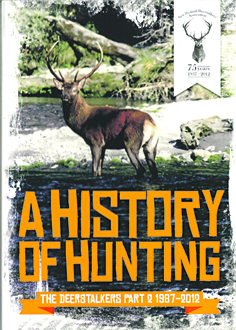
Several stand out. The first chapter, ‘Through the Shutter, Through the Years’ by Bud Jones, on hunting with the camera is excellent. Bud describes hunting with the camera as, “one of the superb joys that only seeing can provide.”
Maureen Coleman’s recounting of a woman’s foray into the world of hunting was another I enjoyed, as were Mark Nobilo’s, Ray Webb’s and Howard Egan’s contributions on fallow herds. Tom Brough on his addiction to pig hunting, Bruce Banwell’s chapter on European Red Deer and the tale of a big 334 Douglas score stag from south Westland are riveting, while compiler Ian Wright’s summation of 25 years of annual conferences will be of interest to NZDA members. Chaz Forsyth’s summary of firearm legislation is very good too. Somehow a story on fishing in Alaska made it but I’m not sure why. While some hunters take a fly rod on hunting trips or catch trumpeter or blue cod at Stewart Island, a NZ story allied with hunting would have been far more preferable. Nevertheless all others are worthy contributions in their own individual light.
On the dust jacket it wisely says, “any organisation is only as strong as its membership”. And inside compiler Ian Wright sets out the achievements of NZDA such as preserving the right of law abiding citizens to possess and use firearms, saving large game hunting in New Zealand, preserving the right of access to hunt on public lands, recording history, giving much education in mountain safety and hunting and providing facilities such as ranges. “NZDA members can hold their heads high,” says Ian.
This book not only entertains, but also enlightens about firearms, herds and management and doubles as a valuable reference book.
My only quibble, it deserved an index to readily flick back to a subject.
The McCashin’s Story
THE McCASHIN’S STORY
By THE McCASHINS
Randon House
RRP $45
Reviewed by Poppa Mike
The subtitle for this recently published book is, ‘The First Craft Beer and the Kiwi Brewing Revolution it Sparked’, which covers the two main threads of this wonderful piece of New Zealand’s history. Told by the McCashin family to the writers John McCrystal and Simon Farrell-Green, it follows a logical sequence in an easy to read, easy to follow manner. 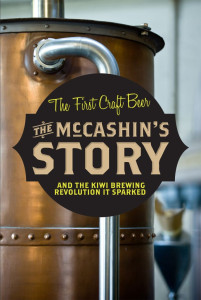
The chapter headings help tell the story, ‘Small Beer’, ‘Tiger by the Tail’ and ‘Fizzing Along’, amongst the ten. Added to this is the wonderful collection of many photographs that help make the alphabet transition from All Black to Brewer, Cider to Doom, Excitement to Foolishness, from Youth and Zing along with all that comes in between.
Inside this historical story is woven the wonderful commitment of the extended McCashin family, friends, and staff, all of whom gave their support, energy and expertise to the key player Terry McCashin, who first established the ‘number eight wire brewery’ in Main Rd, Stoke, Nelson. A large number of these people feature in words, deeds or photographs. None more so than John Te Whiti, who virtually gave his life to the cause, and Jim Pollitt, master brewer for many years. Clearly all those associated with the venture, in some way, were all a big, happy family.
Detail about the brewing industry, the history of the many breweries in Nelson over the years and the revival of the brewery under the ‘Stoke’ label by another generation of the family give another strength to the story. The titles of the last three chapters sum things up neatly – ‘Success and Succession’, ‘Mac is Back’ and ‘Bright Beer, Brighter Prospects’.
If you grew up in Nelson, or lived through this era, or enjoy a cold beer, relish David beating Goliath type tales, or value history’s many tales then this is a ‘must have’ book. Best of all is the ‘Beer Candied Bacon’ recipe on the very last page of the book – icing on the cake after a great read.
New Zealand Seaweeds
New Zealand Seaweeds: an illustrated guide by Wendy A. Nelson
Te Papa Press
RRP $80 (available from Te Papa website store)
Reviewed by Imo McCarthy
Have you ever been disappointed to find that it isn’t a small kahawai attached to the lure you haul in but a large lump of seaweed? Toss it over the side – but what was it? What sort of seaweed? This book will help you find the answer. 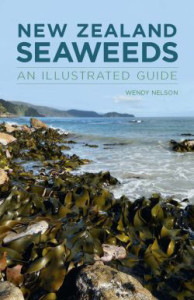
Butterfish are found lurking among seaweed but they are fussy about those they feed on. They particularly like the large brown seaweed Ecklonia, which is beautifully illustrated in this book. If you can find that seaweed maybe the fish will be lurking!
Kids love rock pools and scavenging on the beach. Their finds will include all three types of seaweed, green, brown and red and this book will help them to identify them. Maori gathered kelp for making poha, bags to hold mutton-birds and fish. Karengo, a red seaweed found in intertidal areas is tasty and a great source of protein. Many of us were brought up on Seameal Custard made from seaweed! Wendy Nelson’s book features blocks of text at the bottom of some pages telling the story of our use and abuse of seaweed and its conservation status.
New Zealand Seaweeds: An Illustrated Guide, published by Te Papa Press, is the first photographic identification guide to our seaweeds and includes more than 500 illustrations. The book concentrates on the most commonly found seaweeds in New Zealand. Each seaweed examined is illustrated with underwater or coastal photographs and some are accompanied by detailed paintings from Nancy Adams’ seaweed book first published in 1994. The introduction to the book covers the plant group that seaweeds belong to and some information about their lifestyle.
A few exotic species are included in the book. In Nelson we have the Asian kelp Undaria pinnatifida, which is spreading around our coastline with uncertain consequences for native seaweeds and animals. Recognising and reporting sightings of this species is important in trying to control its spread.
Seaweeds are the base of many food webs in the ocean. Shellfish and crustaceans feed on them and they in turn become food for carnivorous fish. Wendy Nelson tells us that many fish and invertebrates find refuge, habitats and disguise among seaweeds that provide plenty of surfaces upon which creatures can settle. The health of our coasts and rivers directly affects these relationships and this book helps to make us aware of the great diversity of seaweed around our shores.
It is an expensive book, $79.95 so I probably wouldn’t take it to the beach but a few photographs on the digital camera would be enough to help me identify these plants when I got home. It is a user-friendly reference book filling a gap in our shelf of marine texts.
